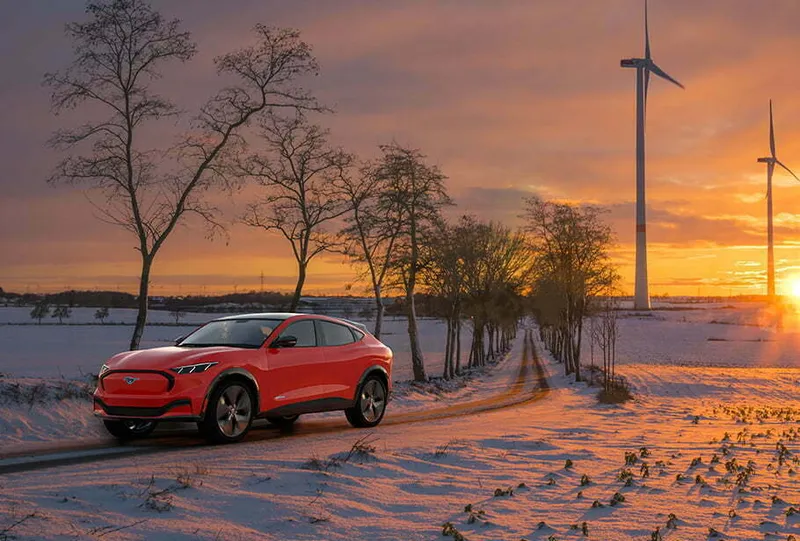Pagrindinis » Electric cars in winter – what to expect?

As the cold season approaches, the habits of car drivers are changing. The cold weather not only wreaks havoc on traffic safety, but also poses challenges for vehicles. So what do electric cars and their owners face in winter?
Cooler temperatures affect the efficiency of electric cars. A test conducted by the American Automobile Association on 5 different models of electric cars showed that when temperatures drop to -6°C, their range can be reduced by up to 41%.
Air conditioning systems also affect the efficiency of an electric car. When choosing an EV model, pay attention to the system it is equipped with. For example, heat pumps use less electricity to heat the cabin or battery than conventional air conditioning systems, so more battery power will be available for extra kilometres.
When planning winter travel, you should take into account that you will travel less than you are used to in the warmer season. It is also a good idea to have at least a few charging points along the journey.
Electric cars are inherently heavier than vehicles with internal combustion engines because of the weight of their battery. It is also usually attached to the base of the vehicle and the centre of gravity of the electric car is lowered to increase its grip and stability on slippery roads.
Electric cars can be safer and easier to drive in winter, i.e. in adverse weather conditions, than a conventional car. The EV’s automatic gear system, ultra-smooth engine and regenerative braking (an energy recovery mechanism that slows down a moving vehicle and converts its kinetic energy into a form that can be used immediately or stored until needed) reduce the likelihood of skidding on acceleration or slipping.

Cold weather also affects the charging process. A frozen battery requires more energy resources, which means longer charging times. For example, overnight charging can take an extra hour or two to fully charge the battery, while fast (DC) charging can take up to several minutes. However, you can speed up charging by warming up the battery before the charging session. Some electric cars (e.g. Tesla) have pre-conditioning systems that warm up the battery when approaching a rapid charging station.
Research in Norway, where the climate is harsher, has shown that owners of electric cars tend to connect them to charging stations as often as possible. If you charge your electric car at home, it is advisable to warm up the interior of the car before you travel, before disconnecting it from the charging point. This way, the electricity will not be used to pre-heat the cabin and you will set off with a full battery. By the way, some EV models (e.g. Tesla, Jaguar I-Pace) have an app that allows you to start heating remotely.
You can also save the battery of your electric car by switching to “eco” mode. In this mode, the battery will provide less energy for the engine and cabin heating, and the electric car will automatically activate regenerative braking.
Throughout the winter, it is advisable to keep the battery at a minimum of 20%. This is because electric vehicles use lithium-ion batteries, which deteriorate more quickly when the battery is fully discharged and needs to be recharged to its maximum.
If you are driving alone, to save battery power you can only turn on heating for your seat and steering wheel if your electric car has these functions. Local heating of the driver’s seat will consume significantly less energy than heating the whole cabin.
If you finish charging just before you leave, your EV’s battery will still be hot from charging and will work more efficiently. Alternatively, if you plan to top up your car at fast charging stations, you can speed up charging by warming up the battery before the charging session.
Choose an economical driving style that is designed to use as little energy as possible. Avoid energy-guzzling acceleration and sudden braking. You’ll save more battery by accelerating gradually and using regenerative braking, which puts some energy back into the battery.
Car and battery manufacturers are continuously improving battery and electric vehicle technology for better driver comfort and safer journeys, as well as promising longer range and less exposure to colder temperatures. So even the cold season should not be a barrier to a greener tomorrow.
We use cookies to ensure that our website runs smoothly and to provide you with the most relevant content. You can choose which cookies you accept.